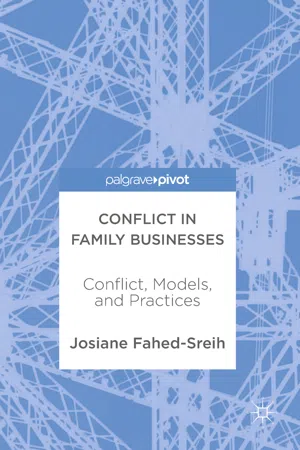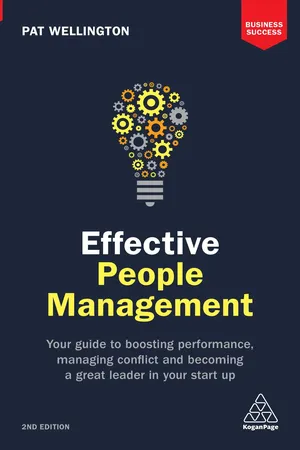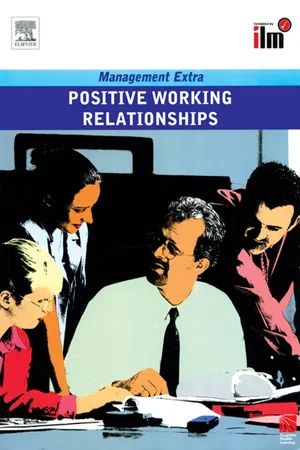Conflict Results
Conflict results refer to the outcomes or consequences of conflicts within a business setting. These results can include both positive and negative impacts on the organization, such as improved problem-solving, increased creativity, or decreased productivity and morale. Managing conflict results effectively is crucial for maintaining a healthy and productive work environment.
4 Key excerpts on "Conflict Results"
- eBook - ePub
Conflict in Family Businesses
Conflict, Models, and Practices
- Josiane Fahed-Sreih(Author)
- 2017(Publication Date)
- Palgrave Macmillan(Publisher)
...Conflict has its functional outcomes. It enhances innovation, creativity, and growth. It improves organizational decision-making. It helps in finding solutions for common problems. It reinforces individual and group performance. It also has dysfunctional outcomes like job stress, dissatisfaction, reduction of communication between the parties in conflict, distrust, damaged relationships, reduction in job performance, increased resistance to change, and organizational commitment and loyalty may be affected (Rahim 2002). Although it has been proven that conflict is beneficial and functional to organizations, most recommendations related to conflict in organizations are related to its resolution, reduction, and minimization. According to Rahim (2002), there is a clear deficiency in the following areas: No clear rules are available to maintain conflict on a certain level; no clear set of guidelines are available to the methods of conflict reduction, ignorance, and enhancement for increasing effectiveness; and no clear set of rules is set to deal with conflict when different situations are present in the same conflict. Since in the old approach to conflict management, it was assumed that all conflict was immoral and acts against organizational goals; conflict management was identical to conflict avoidance. This left parties in conflict to experience only one outcome: a win-lose scenario. In such cases, the loser would feel affronted and this, however, would lead to rehabilitated hostility. From this approach, most managers used to view conflict as something that should be eliminated from an organization. This approach of avoidance in conflict management was widespread during the late nineteenth century and until the mid-1940s. Nonetheless, conflict avoidance is never an adequate strategy for dealing with most conflicts. Although it is one of the strategies of conflict management used up till today, conflict avoidance leaves avoided parties feel neglected...
- eBook - ePub
Effective People Management
Your Guide to Boosting Performance, Managing Conflict and Becoming a Great Leader in Your Start Up
- Pat Wellington(Author)
- 2017(Publication Date)
- Kogan Page(Publisher)
...10 Proactive conflict management Introduction Conflict means disagreement, to battle, to be at odds. It seems to be an inevitable part of human interaction and occurs (at home or at work) when an individual’s needs, desires, values or intentions are in opposition with those of another person (or group). This definition suggests that those involved see their goals as incompatible and the achievement of these goals as being interfered with. Sometimes these differences are real, at other times they are imagined. Either way, the persons involved must see differences and believe they are important for conflict to emerge. If there are no differences there is no motivating force for conflict. The potential for conflict exists everywhere. At some time or other, we all find ourselves in situations where discussions spin out of control, and, instead of cooperating, we become emotional and angry, which if not managed and resolved effectively (and quickly) imposes significant personal (and organizational) cost on those involved. When the energies involved are under control they have potential for good. Out of control they can be forces for ill. A manager’s first priority is to view conflict as not always inherently bad. If handled correctly, the dynamics surrounding conflict can change radically. Some conflicts are relatively minor, easy to handle, or may be simply ignored. Others of greater magnitude require a strategy for successful resolution if they are not to create constant tension or lasting enmity at home or at work. If we recognize the causes that lead to conflict, we can usually steer ourselves and others away from the damage it can cause. I’m always surprised by the small things that can unleash a full-scale row, aggressive language (verbal or non-verbal) or taking actions calculated to annoy. The stages of a team’s development As a manager, your aim is to help your team reach and sustain high performance as quickly as possible...
- eBook - ePub
- Elearn(Author)
- 2009(Publication Date)
- Routledge(Publisher)
...Conflict may happen between individuals within a team; it may break out between teams; it may permeate the whole climate of the organisation. There are many potential causes of conflict: Conflicts often occur over power and interest–as a result of one group or individual protecting their own interests or intruding on someone else’s interests Conflicts can also stem from clashes of personality–between people who find it hard to get on Conflicts can arise when people have contrasting values and beliefs–different ideas about how things should be done Rapid change or organisational restructuring often increases the level of conflict. Leading writers on conflict in organisations are Kakabadse, Ludlow and Vinnicombe...
- eBook - ePub
Working Through Conflict
Strategies for Relationships, Groups, and Organizations
- Joseph P. Folger, Marshall Scott Poole, Randall K. Stutman(Authors)
- 2021(Publication Date)
- Routledge(Publisher)
...Chapter 10 WORKING THROUGH CONFLICT Conflict is inevitable. We can’t make quality decisions, foster teamwork, or build long-lasting relationships without it. Through conflict we learn what we believe and how we can best pursue our goals. In the best circumstances, conflict is a learning experience and presents an opportunity for new insights and personal growth. When conflict is managed positively, differing points of view are respected, effective partnership materializes, and people feel supported by others. When managed poorly, conflict can erode trust and undermine relationships. People can become hardened adversaries, trying to win or get their way at all costs. Just about everything becomes interpreted as a personal affront. In extreme cases, conflict poorly handled can kill. The same duality is true in organizations. When managed skillfully, conflict produces shared understanding and quality decisions. Constructively managed conflict has also been shown to strengthen team participation and commitment (John-Eke & Akintokunbo, 2020). When handled poorly, conflict can result in low commitment and high attrition. The process of working through conflict is both inevitable in our daily lives and paramount to our satisfaction and quality of life. Since we will experience conflict whether we want to or not, it makes sense to learn the skills necessary to make it productive and positive. Throughout this book, we have explained how research shed light on what constitutes conflict and how we can explain its underlying qualities and issues. In this chapter, we turn our attention to the practical advice available to help students of conflict navigate the choppy waters of everyday conflict. Of the many strategies offered by those who work with and advise others about conflict, we selected 15 ideas we believe are worth the investment of time and practice to become more skilled at conflict...



